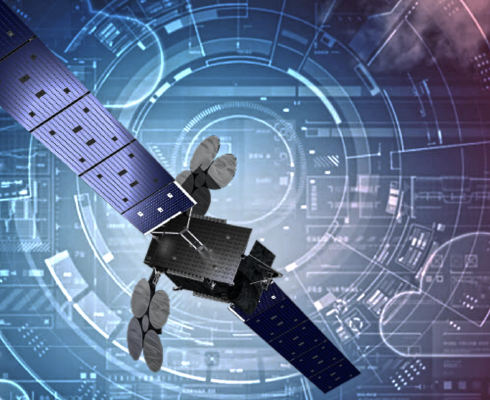Stuart Daughtridge, Vice President of Advanced Technology, Kratos
Satellite has always been considered as unique, special, and different. However, that uniqueness also means that integrating its systems with other technologies, such as telecom and mobile, can be extremely challenging.

It’s historically manual and proprietary nature can make the deployment process less than ideal and tricky to manage, with vendors having different proprietary waveforms and hardware.
For an industry that has faced little pressure to change, but is now beset by disruption and competition, there’s a new urgency to move further along the path of digital transformation to better compete and play in the larger ecosystem.
Imagine deploying and operating a satellite service in a common way like telcos and mobile operators do with fiber and wireless that’s seamless and interoperable across different vendors and equipment. That’s cloud native and can be orchestrated to provision services in minutes... not days, weeks, or months.
 Those are just the first steps—to be truly seamless and interoperable, satellite needs to move up the stack beyond virtualization of ground infrastructure. It needs containerization to be cloud native; it needs common waveforms for access; and it needs orchestration and APIs to automate services across multi-operator, multi-vendor environments.
Those are just the first steps—to be truly seamless and interoperable, satellite needs to move up the stack beyond virtualization of ground infrastructure. It needs containerization to be cloud native; it needs common waveforms for access; and it needs orchestration and APIs to automate services across multi-operator, multi-vendor environments.
Satellite has a multi-billion-dollar opportunity to extend the reach and fill the gaps of telcos and mobile network operators like no other technology. Plus, they’ve shown us the way. In fact, they’ve solved many of the very same issues that have kept the satellite industry bottled up. The result has been stunning, creating a dominant global communications grid, of which satellite holds a mere 1% share.
The good news is that digital transformation is beginning to unfold throughout the satellite industry. The DIFI standard, for example, is being adopted to convert analog RF signals to digital bits for an IP-centric world. And there’s progress moving from hardware to software with virtualization.
__________________________________________
Moving up the stack instead of stacking boxes.
______________________________________________________
Telecom providers realized they had a problem years ago when, to deliver a service, they’d end up with stacks of non-standard, incompatible vendor equipment at each point of presence.
They began with network function virtualization, disaggregating functions from hardware and containerizing them in software. With containerization, they could now run nearly all their applications, modems, firewalls, accelerators, all natively on the same generic compute or on any cloud native environment.
Similarly, when Kratos introduced the OpenSpace® Platform, the industry’s first fully software-defined ground system, it virtualized almost every component of the satellite ground station. OpenSpace uses Kubernetes to deploy and manage containerized applications, such as virtual modems.
Now all the satellite signal processing—the channelizers, modems, and combiners—can run alongside other 3rd party applications, such as accelerators and SD-WAN.
Network functions can run in the public cloud, in a private data center, even at the far edge on an on-premise device, just as telecom providers do with universal customer premise equipment (uCPE).
With containerization, there is a common interoperable approach to network deployment that allows you to bridge to 4G and 5G and orchestrate business and operational functions across digital infrastructure.
______________________________________
Speaking the Correct Language
______________________________________
Going up a level from digital infrastructure we get to 3GPP and the 5G NTN standard that addresses the standard waveforms and access technologies.
One reason the wireless industry has become so ubiquitous and seamless is because 3GPP, the standards body, has defined several generations of standard waveforms that are interoperable across vendors.
Standards like DVB-S2X do exist in the satellite industry, but vendors tweak the waveforms for bandwidth efficiency, leading to each vendor’s modem—in effect—being proprietary and unable to work with others.
That’s why 5G adding NTN is such a game-changer. It enables convergence of both terrestrial and non-terrestrial networks into the same user equipment and the same core, the software-defined intelligence of the cell network, to deploy services in the same way. To bring 5G-NTN into the satellite world, Kratos partnered with Radisys, a leading Radio Access Network (RAN) partner for telecom and mobile operators, to build a cloud native 5G-NTN solution through its OpenSpace Platform.
A 5G-NTN satellite gateway essentially works as the equivalent of a cellular base station, allowing operators to deliver true 5G mobile broadband over satellite for internet access to satcom terminals nearly anywhere.
Where a wireless network is out of range of a tower, a mobile operator can switch to satellite, providing 5G narrowband connectivity to cell phone users and broadband connectivity to satcom terminals, whether enterprise, government, or mobile, just as they do across cellular towers today.
Carmel Ortiz, SVP of Technology and Innovation at Intelsat, one of the largest global satellite operators, “We are implementing Kratos’ OpenSpace Platform to support our next generation, multi-orbit network. This partnership between Kratos and Radisys gives us confidence that we will be able to offer our consumer, business and government customers best in class 5G services.”
With 5G NTN functions running as containerized software, the next step-up addresses open management and orchestration interfaces. These standards allow satellite services to be provisioned and activated in the same way that communication service providers already automate end-to-end services across multi-provider and multi-vendor networks.
________________
The Transport Layer
__________________
Defined by MEF, a global industry alliance, Carrier Ethernet is a more robust, advanced version of the familiar Ethernet. Carrier Ethernet is designed for long-distance connectivity with higher levels of quality of service.
Typically, telecommunication carriers using satellite would have to manage those circuits separately from their terrestrial ones, making it difficult and costly to scale. That’s what makes the MEF Carrier Ethernet standard special. As a technology-agnostic layer-2 service, it allows satellite to look like just another access network, similar to Ethernet or Wi-Fi.
By adopting Carrier Ethernet, satellite operators can offer to extend standard carrier-grade services over satellite that can be consumed directly by the enterprise or other users. By offering seamless end-to-end integration at the orchestration layer, Carrier Ethernet helps mainstream satellite to become the easy button for extending high-speed orchestrated connectivity for applications like IP-based services.
Carrier Ethernet also allows telecom providers to offer satellite services the same way they offer their other access connectivity options. Satellite becomes another standard service in their portfolio, like fiber or wireless, that they can leverage for what it’s best at, and that’s reach, whether it’s over LEO, MEO, or GEO.

_______________________________
Open SATCOM Management
_______________________________
The telecommunications ecosystem needed a way for the tremendous number of companies that make it up to play together. TM Forum, a global industry alliance that’s focused on digital transformation, has defined and provides APIs that allow services to be managed end-to-end across multi-operator, multi-vendor environments.
In an application that was a first for satellite, a group of companies, including from the satellite industry SES, OneWeb, Airbus, and Kratos, and from the telecoms industry Oracle, Amertus, Alvatross, and Terrastar, demonstrated how they could use these same APIs and standards for “Open SATCOM Management.”
Using these open system interfaces, they showed they could deliver a seamless, automated, end-to-end SATCOM service from a telecom planning/orchestration infrastructure across GEO, MEO, and LEO providers that a communications service provider could order, activate, and manage in near real-time from a self-service portal.
Under the hood, the SATCOM order activated a workflow that was automatically decomposed and orchestrated through the stack, across different operators and vendor equipment, all the way down to activation to deliver a mission-critical service.
Dr. Amina Boubendir, Head of Research and Standardization at Airbus, explained how TM Forum APIs and other standards, including MEF, can be reused and adapted for satellite communications. “Interoperability is all about interfacing different subsystems and making sure they work together properly. In the end, customers just want connectivity. Our job is to make it transparent and to hide the complexity, whether it’s a multi-vendor or multi-technology environment.”
David Villegas, Senior Manager for Digital Architecture for SES, likened the API interfaces between the layers of the digital architecture to Lego blocks, making it possible for customers who want flexible satellite connectivity, “to interact with us anytime anywhere like they do with other providers. By leveraging the work of TM Forum members who have for years defined their processes and support systems, and how they interact with one another, we’re able to say, ‘We can talk with you in your same language that you request terrestrial connectivity. Now you can request satellite connectivity the same way. You don’t have to do anything different to connect with us.”
The Foundation for a Lasting Relationship
The satellite industry can still consider itself unique and special, but without the limitations of the past. There’s a path forward, paved largely by the terrestrial telecom and wireless sectors, that’s now tweaked for space that will allow satellite to join their ubiquitous ecosystem far easier.
 There’s no need to reinvent the wheel. We can simply add in new ways to access connectivity over satellite, using 5G NTN, for example, and service orchestration and other standards that can automate service delivery in minutes, not days or weeks. We can emulate the established concept of operations and seamless user experience that already exist in the broader world.
There’s no need to reinvent the wheel. We can simply add in new ways to access connectivity over satellite, using 5G NTN, for example, and service orchestration and other standards that can automate service delivery in minutes, not days or weeks. We can emulate the established concept of operations and seamless user experience that already exist in the broader world.
Kratos, with its OpenSpace ground platform, along with its many partners and customers, are leveraging these foundational technologies and standards, including Kubernetes containerization, 3GPP 5G NTN, MEF Carrier Ethernet, and TM Forum APIs and more to make this a reality.

Stuart Daughtridge
Author Stuart Daughtridge is the Vice President of Advanced Technology, Kratos. He leads the company’s planning of the next generation of ground capabilities.
www.kratosdefense.com

